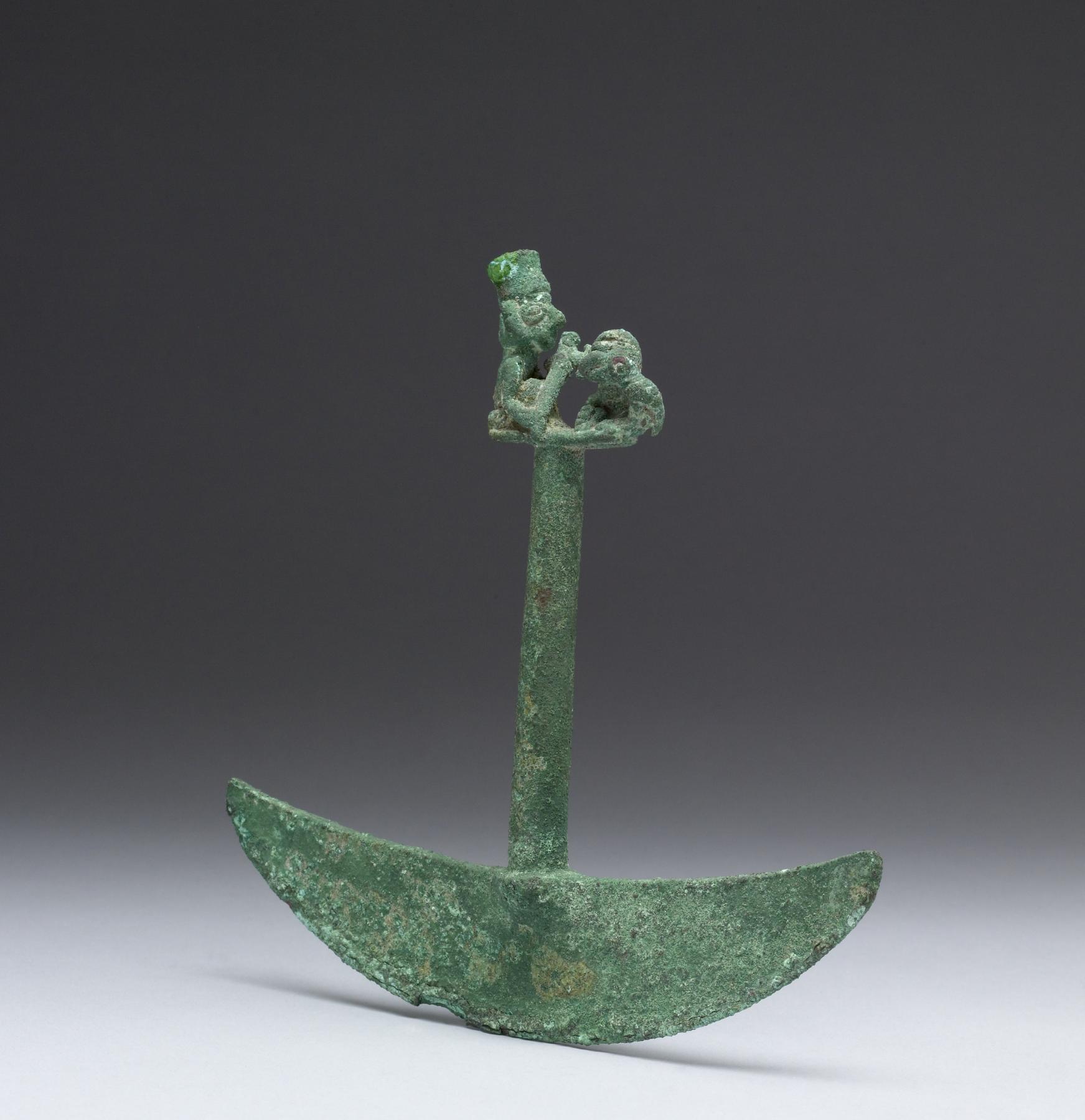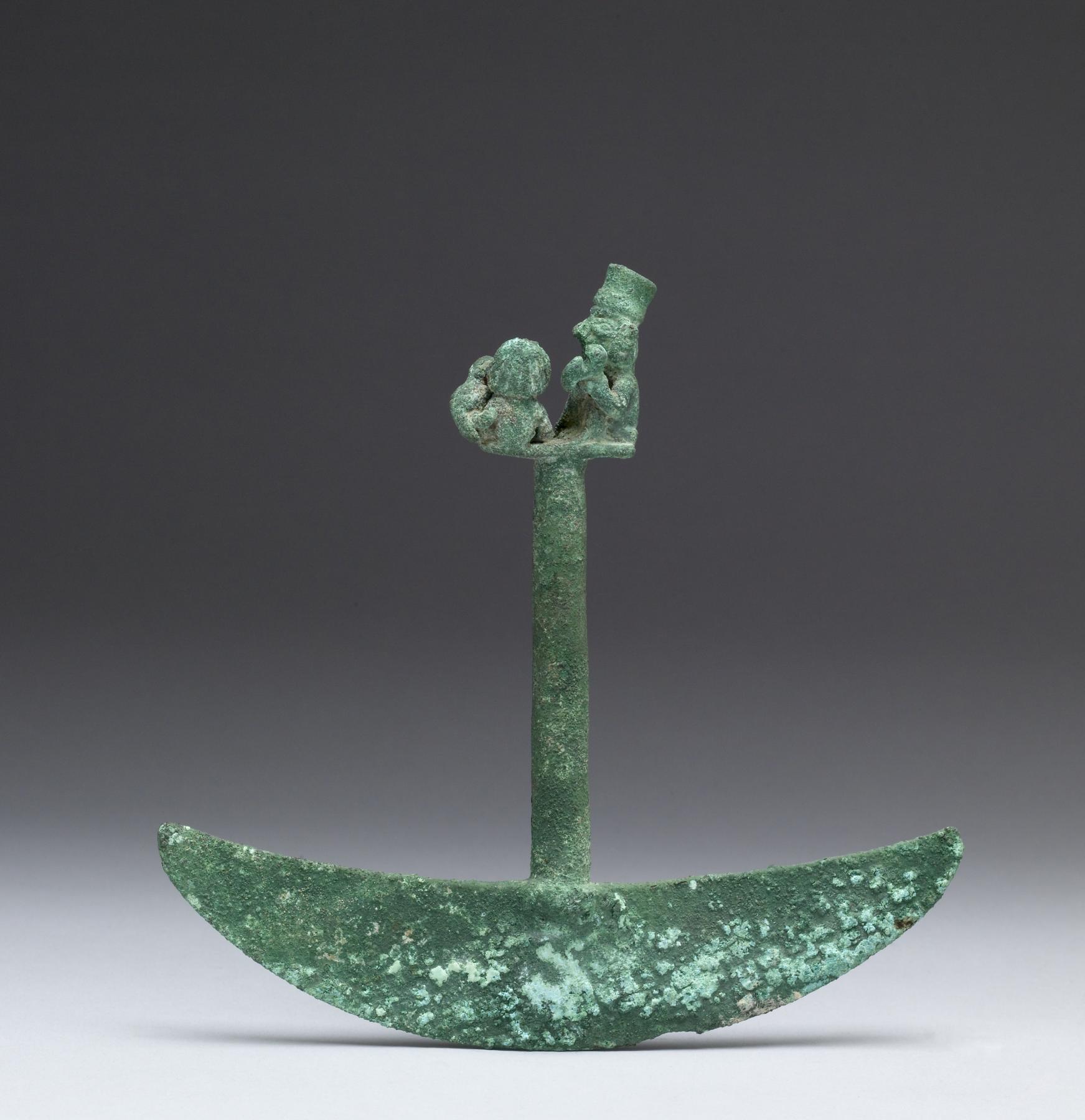Tumi (Ritual Knife)
(Ancient Americas )
This object pertains to the Andean theme of sacrifice and death as a religious act of regeneration and renewal. The small knife with crescent-shaped blade (a tumi) is a traditional Andean cutting implement that appears to have been the invention of the Moche during the Early Intermediate Period. Tumis are portrayed in Moche art being wielded by supernatural beings during decapitation rites and to threaten other beings; their quotidian use by humans, however, remains an open question. This tumi's shaft end is decorated with a three-dimensional narrative of the impending sacrifice of a parrot, which perches on the arm of an attendant. The larger figure wields a hafted axe, its curved blade poised ready and aimed at the bird.
The images on the tumi relate to the theme of sacrifice and agricultural fertility, the tumi being the quintessential ritual sacrifice tool. Among the Nazca, the severed head was likened to a seed from which sprang renewed life in the form of young plants; large caches of trophy heads found at Nazca sites are the remains of religious rites intended to ensure agricultural success. In short, the human trophy head was not only the most sacred of offerings to the spiritual forces of nature; they were also integral to the pan-Andean ideology of death and regeneration, being but two parts of the same universal dyad. Death, caused by sacrifice and decapitation, is not the end; rather it leads to rejuvenation and new life.
Provenance
Provenance (from the French provenir, 'to come from/forth') is the chronology of the ownership, custody, or location of a historical object. Learn more about provenance at the Walters.
Private collection, California; Ron Messick Fine Arts, Santa Fe, New Mexico [date and mode of acquisition unknown]; John G. Bourne, May 12, 1999, by purchase; by bequest to Walters Art Museum, 2017.
Exhibitions
| 2012-2013 | Exploring Art of the Ancient Americas: The John Bourne Collection Gift. The Walters Art Museum, Baltimore; Frist Center for the Visual Arts, Nashville. |
Geographies
Peru, North Coast (Place of Origin)
Measurements
H: 5 13/16 x W: 5 15/16 x D: 11/16 in. (14.7 x 15.1 x 1.8 cm)
Credit Line
Bequest of John G. Bourne, 2017
Location in Museum
Not on view
Accession Number
In libraries, galleries, museums, and archives, an accession number is a unique identifier assigned to each object in the collection.
In libraries, galleries, museums, and archives, an accession number is a unique identifier assigned to each object in the collection.
2009.20.255






